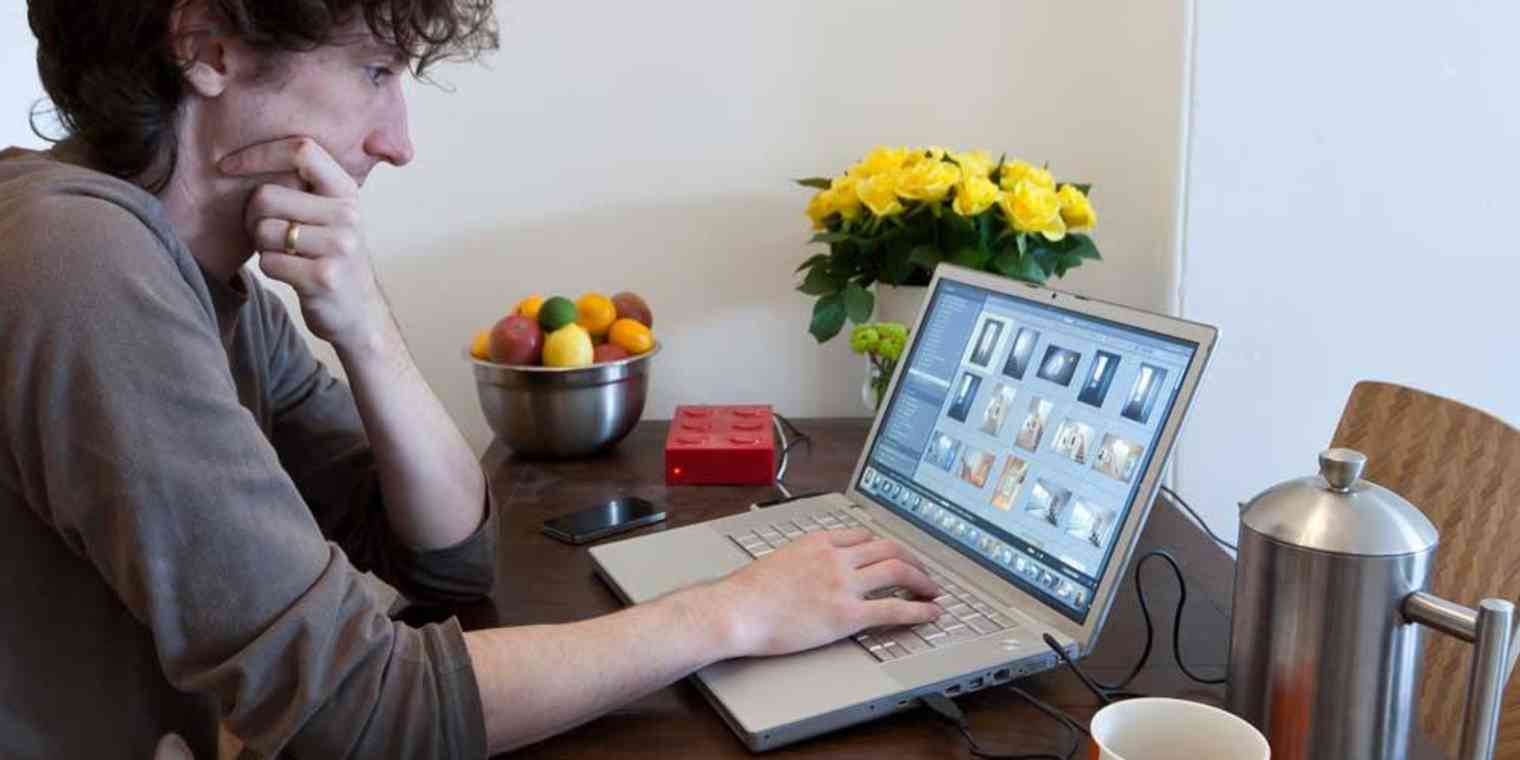Countries Resisting Remote Work
Published

In countries like the US and the UK, telecommuting is a perennial favorite. But that's not necessarily the case all over the world.
Two years ago, the pandemic forced us to telecommute out of necessity - but now, with many safety measures lifted, large portions of the workforce are still working from home. And many do this permanently. In several countries, companies have converted part or all of their former office workplaces into remote workplaces. Additionally, there has been a sharp increase in the number of job postings that include a remote work component.
A recent study by the job site Indeed shows that the number of global job advertisements mentioning remote work has increased since Almost tripled at the start of the pandemic from an average of just 2.5% in January 2020 to almost 7.5% in September 2021, with countries such as Ireland, Spain and the UK recording the largest increases. Meanwhile, the career site Ladders predicts that by the end of 2022 25% of all professionals in North America work remotely will work. That doesn't even take into account the number of jobs that aren't technically classified as remote or hybrid yet, but where workers are still at home while their bosses toy with formal return-to-work arrangements.
Meanwhile, many employees who were recalled are returning to a partially remote workplace; around the world are now working 38% of employees in a hybrid office , according to the 2022 Microsoft Work Trend Index. Much of the world is evolving into a more advanced model for the future of the workplace, with employers embracing remote and hybrid offices at scale.
But this is not necessarily the case in all countries.
In some countries, teleworking is not as culturally embedded, has not been embraced by society, or has never taken hold due to technological or logistical obstacles. So while many countries are marching headfirst into the future of remote working, workers in countries like France and Japan are often returning to the office full-time, rejecting the idea that a five-day week in the office is a relic of the past.
The French are usually reluctant to change.
Over the last two years, working from home has become so commonplace for many employees that it's hard to remember Praxis was still quite rare outside Scandinavia and a few areas in Western Europe in the 2010s. Now, most European countries - especially those with higher GDPs - have wholeheartedly embraced the concept.
However, France remains an outlier.
According to Ifop study for the French think tank Fondation Jean-Jaurès only give 29% of French workers , to work remotely “at least once a week.” In comparison, it is 51% of Germans, 50% of Italians, 42% of Brits and 36% of Spaniards. Even those in France who say they work remotely appear to be far less likely to do so than their European neighbors. While in Italy 30% of workers reported teleworking four to five days a week and 17% two to three days, in France the figures are 11% and 14% respectively.
"The French are mostly reluctant to change"
says Sonia Levillain, professor at the IÉSEG School of Management in Lille and author of the Little Toolbox of Remote Management.
"It's a cliché, but it's also reality.
Since workers returned to the office in June last year, hybrid work has gained some momentum in France. Many companies are now moving to a flexible office concept with hot desking. But
"Employees are very skeptical about it"
, says Levillain.
“They were very attached to the physical office - the place where they worked - because it was a sign of identity and belonging to the company.”
The reluctance to work remotely could also be related to the traditional way of working in France, where bosses have a strong need to control their employees.
"Historically, management practices have not been focused on trust and autonomy, but rather on a top-down approach"
, explains Levillain.
Social interactions are also an important tool for decision making in the French office. Since they are traditionally quite informal, this is difficult to depict on a computer screen.
"Communication is spontaneous - it is not really organized and structured at a specific time with specific people"
, explains Levillain, noting that managers value unplanned contacts and interactions in the workplace.
"You walk around the office and discuss things at the coffee machine, because that's where a lot of decisions are made and solutions are found."
Working sustainably in a hybrid mode would mean moving from the current informal office structure to a more structured one.
"Culturally speaking"
, sagt Levilain,
"I think we still have a lot of work to do to achieve that."
Everyone wanted to get back to the office as quickly as possible

Those : techcrunch.com
Japan is another country that is a poor candidate for remote work due to its highly social work structure, according to Indeed research, which shows almost no increase in remote jobs for the period January 2020 to September 2021.
Parissa Haghirian, a professor of international management at Sophia University in Tokyo, explains that there are many unspoken messages in the Japanese workplace - such as subtle body language cues or the " Reading the air " that can guide the direction of a meeting - and these simply couldn't be examined on a screen. "In Japan, it is always better to hold a meeting in person than to write an email because non-verbal communication plays a very important role plays," she explains. "There's this idea that I know you, that I like you, and that I feel good about what you say."
In Japan, it is always better to meet in person than to write an email because non-verbal communication plays a very important role - Parissa Haghirian
Dialogue is also essential for decision-making. While companies overseas typically assign clear responsibilities to specific employees (and evaluate them individually), in Japan the roles are far less clearly defined, and employees work together in teams and make decisions as a group. This makes it difficult to split processes and distribute work in a remote environment, resulting in a lower perception of productivity outside the office.
"Since there is no clear boundary where your work ends and mine begins, everyone does everything together"
, sagt Haghirian.
"This type of interaction in a Japanese company is very fluid, but often confusing to outsiders because you never know who is really in charge or who is doing what."
Japan also places a high value on mentorship in the workplace. Senior employees are often tasked with regularly teaching and supervising younger colleagues - something that simply wasn't possible as efficiently in a remote environment. “After a while, people got tired of remote work and wanted to get back to the office as quickly as possible,” says Haghirian.
Presenteeism is also a problem facing Japan has been bothering me for a long time . Many workers fear a lack of career advancement if they don't toil long hours in the office, says Haghirian, who knows many people who haven't worked a single day remotely during the pandemic.
Still, there are some signs of change. The IT giant Fujitsu, for example, last year Work Life Shift "Program launched, transforming the office into a "collaboration hub" for hybrid work. It also created more clearly defined job areas that make it easier for the 80,000 employees in Japan to work remotely. The car manufacturer Honda, the mobile phone provider SoftBank and Telecommunications company NTT Communications have introduced similar telecommuting relief, signaling a break in Japan's conservative corporate culture that could bring companies more in line with the will of workers 80% in a survey by Persol Research and Consulting Co . from February expressed the desire to continue working from home.
Despite some changes, many Japanese workers are still reluctant to combine their personal life with office life, preferring to have clear roles and boundaries for both (the office is for work and the home is for relaxation). The country even has one of the lowest rates in the OECD for access to personal computers, and home offices are limited due to the small size of the average city apartment Far less common in this highly urbanized society than in the West.
Tracy Hadden Loh, a fellow at the Brookings Institution, a think tank in Washington, D.C., says real estate plays a key role in shaping a culture toward remote work.
“The long-term sustainability of telecommuting depends on workers’ housing conditions”
, she says.
"In Asia, where many people live in circumstances where there are far fewer square meters per household member, working from home is not practical or attractive."
Globally, most people will still need offices

Those : zapier.com
Access to high-speed broadband connections is another barrier that can determine a country's successful transition to hybrid work arrangements, says Loh. In many countries in the Global South, for example, workers are returning to telecommuting after lukewarm experiments that were marred by poor technological infrastructure disabled, return to work .
"The knowledge economy is growing enormously, but cultural preferences and typical living standards are not changing that much"
says Loh.
“So globally, most people will still need an office.”
However, there is an undeniable global shift in the ability to get work done outside the confines of a traditional office, with many employees now able to log in from home after learning how to do so at the height of the pandemic . Although not all countries are as enthusiastic about teleworking as the US or the UK, the trends towards hybrid and teleworking are unbroken.

Those : realbusiness.co.uk
Of course, this also applies to the office. Companies around the world are now navigating the pros and cons of each model and choosing which aspects fit the specifics of their respective cultures. Countries like France or Japan may have been slower to adapt to remote and hybrid work, but progressive companies are now shaking up corporate norms there too, meaning it's only a matter of time before the dominoes fall.








